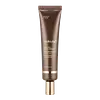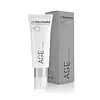What's inside
What's inside
 Key Ingredients
Key Ingredients

 Benefits
Benefits

 Concerns
Concerns

 Ingredients Side-by-side
Ingredients Side-by-side

Water
Skin ConditioningDipropylene Glycol
HumectantButylene Glycol
HumectantGlycerin
HumectantPropanediol
Solvent1,2-Hexanediol
Skin ConditioningNiacinamide
SmoothingMacadamia Integrifolia Seed Oil
Skin ConditioningOlea Europaea Fruit Oil
MaskingSimmondsia Chinensis Seed Oil
EmollientVitis Vinifera Seed Oil
EmollientMacadamia Ternifolia Seed Oil
EmollientRetinal
Skin ConditioningSodium Hyaluronate
HumectantHydrolyzed Collagen
EmollientChitosan
Centella Asiatica Extract
CleansingCentella Asiatica Leaf Extract
Skin ConditioningCentella Asiatica Root Extract
Skin ConditioningCoco-Caprylate/Caprate
EmollientSqualane
EmollientPolyglyceryl-3 Distearate
EmulsifyingDimethyl Isosorbide
SolventPentylene Glycol
Skin ConditioningPanthenol
Skin Conditioning4-T-Butylcyclohexanol
MaskingHydrogenated Lecithin
EmulsifyingHydroxyethyl Acrylate/Sodium Acryloyldimethyl Taurate Copolymer
Emulsion StabilisingAcrylates/C10-30 Alkyl Acrylate Crosspolymer
Emulsion StabilisingSucrose Palmitate
EmollientCaprylic/Capric Triglyceride
MaskingHydroxypinacolone Retinoate
Skin ConditioningDiethylhexyl Syringylidenemalonate
Skin ProtectingTromethamine
BufferingEthylhexylglycerin
Skin ConditioningGlyceryl Stearate Citrate
EmollientAllantoin
Skin ConditioningBiosaccharide Gum-1
HumectantDipotassium Glycyrrhizate
HumectantAdenosine
Skin ConditioningRetinol
Skin ConditioningBakuchiol
AntimicrobialRetinyl Palmitate
Skin ConditioningBrassica Campestris Sterols
EmollientLinoleic Acid
CleansingCholesterol
EmollientPolyglyceryl-10 Laurate
Skin ConditioningCeramide NP
Skin ConditioningPPG-13-Decyltetradeceth-24
EmulsifyingRetinyl Linoleate
Skin ConditioningPhytosteryl/Behenyl/Octyldodecyl Lauroyl Glutamate
Skin ConditioningBeta-Glucan
Skin ConditioningAluminum/Magnesium Hydroxide Stearate
Emulsion StabilisingPentaerythrityl Tetra-Di-T-Butyl Hydroxyhydrocinnamate
AntioxidantPotassium Cetyl Phosphate
EmulsifyingPolyglyceryl-3 Methylglucose Distearate
EmulsifyingSilica
AbrasiveIsopropyl Lauroyl Sarcosinate
Skin ConditioningTocopherol
AntioxidantRetinyl Retinoate
Skin ConditioningTris(Tetramethylhydroxypiperidinol)Citrate
StabilisingBenzotriazolyl Dodecyl P-Cresol
UV AbsorberXanthan Gum
EmulsifyingDisodium EDTA
Parfum
MaskingWater, Dipropylene Glycol, Butylene Glycol, Glycerin, Propanediol, 1,2-Hexanediol, Niacinamide, Macadamia Integrifolia Seed Oil, Olea Europaea Fruit Oil, Simmondsia Chinensis Seed Oil, Vitis Vinifera Seed Oil, Macadamia Ternifolia Seed Oil, Retinal, Sodium Hyaluronate, Hydrolyzed Collagen, Chitosan, Centella Asiatica Extract, Centella Asiatica Leaf Extract, Centella Asiatica Root Extract, Coco-Caprylate/Caprate, Squalane, Polyglyceryl-3 Distearate, Dimethyl Isosorbide, Pentylene Glycol, Panthenol, 4-T-Butylcyclohexanol, Hydrogenated Lecithin, Hydroxyethyl Acrylate/Sodium Acryloyldimethyl Taurate Copolymer, Acrylates/C10-30 Alkyl Acrylate Crosspolymer, Sucrose Palmitate, Caprylic/Capric Triglyceride, Hydroxypinacolone Retinoate, Diethylhexyl Syringylidenemalonate, Tromethamine, Ethylhexylglycerin, Glyceryl Stearate Citrate, Allantoin, Biosaccharide Gum-1, Dipotassium Glycyrrhizate, Adenosine, Retinol, Bakuchiol, Retinyl Palmitate, Brassica Campestris Sterols, Linoleic Acid, Cholesterol, Polyglyceryl-10 Laurate, Ceramide NP, PPG-13-Decyltetradeceth-24, Retinyl Linoleate, Phytosteryl/Behenyl/Octyldodecyl Lauroyl Glutamate, Beta-Glucan, Aluminum/Magnesium Hydroxide Stearate, Pentaerythrityl Tetra-Di-T-Butyl Hydroxyhydrocinnamate, Potassium Cetyl Phosphate, Polyglyceryl-3 Methylglucose Distearate, Silica, Isopropyl Lauroyl Sarcosinate, Tocopherol, Retinyl Retinoate, Tris(Tetramethylhydroxypiperidinol)Citrate, Benzotriazolyl Dodecyl P-Cresol, Xanthan Gum, Disodium EDTA, Parfum
Water
Skin ConditioningGlycolic Acid
BufferingGlycerin
HumectantCyclopentasiloxane
EmollientSodium Hydroxide
BufferingSteareth-2
EmulsifyingNiacinamide
SmoothingCaprylic/Capric Triglyceride
MaskingGlyceryl Stearate Se
EmulsifyingCetearyl Alcohol
EmollientSteareth-21
CleansingSodium Acrylate/Sodium Acryloyldimethyl Taurate Copolymer
Emulsion StabilisingGlycyrrhetinic Acid
Skin ConditioningPanthenol
Skin ConditioningIsohexadecane
EmollientSodium Ascorbyl Phosphate
AntioxidantPhenoxyethanol
PreservativeBenzyl Alcohol
PerfumingPolysorbate 80
EmulsifyingPinus Pinaster Bark Extract
AntioxidantPotassium Sorbate
PreservativeDisodium EDTA
Dipropylene Glycol
HumectantSorbitan Oleate
EmulsifyingGalactaric Acid
Pyruvic Acid
MaskingSclerotium Gum
Emulsion StabilisingPolysorbate 20
EmulsifyingRetinol
Skin ConditioningSaccharomyces Lysate Extract
HumectantIsomalt
HumectantBoswellia Serrata Gum
MaskingSodium Hyaluronate
HumectantSorbitol
HumectantBHT
AntioxidantLecithin
EmollientLactobacillus Ferment
Skin ConditioningTocopherol
AntioxidantBHA
AntioxidantXanthan Gum
EmulsifyingCaprylyl Glycol
EmollientArgania Spinosa Callus Culture Extract
Skin ConditioningGlyceryl Caprylate
EmollientSodium Benzoate
MaskingOleic Acid
EmollientCI 77491
Cosmetic ColorantWater, Glycolic Acid, Glycerin, Cyclopentasiloxane, Sodium Hydroxide, Steareth-2, Niacinamide, Caprylic/Capric Triglyceride, Glyceryl Stearate Se, Cetearyl Alcohol, Steareth-21, Sodium Acrylate/Sodium Acryloyldimethyl Taurate Copolymer, Glycyrrhetinic Acid, Panthenol, Isohexadecane, Sodium Ascorbyl Phosphate, Phenoxyethanol, Benzyl Alcohol, Polysorbate 80, Pinus Pinaster Bark Extract, Potassium Sorbate, Disodium EDTA, Dipropylene Glycol, Sorbitan Oleate, Galactaric Acid, Pyruvic Acid, Sclerotium Gum, Polysorbate 20, Retinol, Saccharomyces Lysate Extract, Isomalt, Boswellia Serrata Gum, Sodium Hyaluronate, Sorbitol, BHT, Lecithin, Lactobacillus Ferment, Tocopherol, BHA, Xanthan Gum, Caprylyl Glycol, Argania Spinosa Callus Culture Extract, Glyceryl Caprylate, Sodium Benzoate, Oleic Acid, CI 77491
Ingredients Explained
These ingredients are found in both products.
Ingredients higher up in an ingredient list are typically present in a larger amount.
This ingredient is an emollient, solvent, and texture enhancer. It is considered a skin-softener by helping the skin prevent moisture loss.
It helps thicken a product's formula and makes it easier to spread by dissolving clumping compounds.
Caprylic Triglyceride is made by combining glycerin with coconut oil, forming a clear liquid.
While there is an assumption Caprylic Triglyceride can clog pores due to it being derived from coconut oil, there is no research supporting this.
Learn more about Caprylic/Capric TriglycerideDipropylene Glycol is a synthetically created humectant, stabilizer, and solvent.
This ingredient helps:
Dipropylene glycol is technically an alcohol, but it belongs to the glycol family (often considered part of the ‘good’ alcohols). This means it is hydrating and gentle on skin unlike drying solvent alcohols like denatured alcohol.
As a masking agent, Dipropylene Glycol can be used to cover the smell of other ingredients. However, it does not have a scent.
Studies show Dipropylene Glycol is considered safe to use in skincare.
Learn more about Dipropylene GlycolDisodium EDTA plays a role in making products more stable by aiding other preservatives.
It is a chelating agent, meaning it neutralizes metal ions that may be found in a product.
Disodium EDTA is a salt of edetic acid and is found to be safe in cosmetic ingredients.
Learn more about Disodium EDTAGlycerin is already naturally found in your skin. It helps moisturize and protect your skin.
A study from 2016 found glycerin to be more effective as a humectant than AHAs and hyaluronic acid.
As a humectant, it helps the skin stay hydrated by pulling moisture to your skin. The low molecular weight of glycerin allows it to pull moisture into the deeper layers of your skin.
Hydrated skin improves your skin barrier; Your skin barrier helps protect against irritants and bacteria.
Glycerin has also been found to have antimicrobial and antiviral properties. Due to these properties, glycerin is often used in wound and burn treatments.
In cosmetics, glycerin is usually derived from plants such as soybean or palm. However, it can also be sourced from animals, such as tallow or animal fat.
This ingredient is organic, colorless, odorless, and non-toxic.
Glycerin is the name for this ingredient in American English. British English uses Glycerol/Glycerine.
Learn more about GlycerinNiacinamide is a multitasking form of vitamin B3 that strengthens the skin barrier, reduces pores and dark spots, regulates oil, and improves signs of aging.
And the best part? It's gentle and well-tolerated by most skin types, including sensitive and reactive skin.
You might have heard of "niacin flush", or the reddening of skin that causes itchiness. Niacinamide has not been found to cause this.
In very rare cases, some individuals may not be able to tolerate niacinamide at all or experience an allergic reaction to it.
If you are experiencing flaking, irritation, and dryness with this ingredient, be sure to double check all your products as this ingredient can be found in all categories of skincare.
When incorporating niacinamide into your routine, look out for concentration amounts. Typically, 5% niacinamide provides benefits such as fading dark spots. However, if you have sensitive skin, it is better to begin with a smaller concentration.
When you apply niacinamide to your skin, your body converts it into nicotinamide adenine dinucleotide (NAD). NAD is an essential coenzyme that is already found in your cells as "fuel" and powers countless biological processes.
In your skin, NAD helps repair cell damage, produce new healthy cells, support collagen production, strengthen the skin barrier, and fight environmental stressors (like UV and pollution).
Our natural NAD levels start to decline with age, leading to slower skin repair, visible aging, and a weaker skin barrier. By providing your skin niacinamide, you're recharging your skin's NAD levels. This leads to stronger, healthier, and younger looking skin.
Another name for vitamin B3 is nicotinamide. This vitamin is water-soluble and our bodies don't store it. We obtain Vitamin B3 from either food or skincare. Meat, fish, wheat, yeast, and leafy greens contain vitamin B3.
The type of niacinamide used in skincare is synthetically created.
Learn more about NiacinamidePanthenol is a common ingredient that helps hydrate and soothe the skin. It is found naturally in our skin and hair.
There are two forms of panthenol: D and L.
D-panthenol is also known as dexpanthenol. Most cosmetics use dexpanthenol or a mixture of D and L-panthenol.
Panthenol is famous due to its ability to go deeper into the skin's layers. Using this ingredient has numerous pros (and no cons):
Like hyaluronic acid, panthenol is a humectant. Humectants are able to bind and hold large amounts of water to keep skin hydrated.
This ingredient works well for wound healing. It works by increasing tissue in the wound and helps close open wounds.
Once oxidized, panthenol converts to pantothenic acid. Panthothenic acid is found in all living cells.
This ingredient is also referred to as pro-vitamin B5.
Learn more about PanthenolRetinol is a gold-standard ingredient for anti-aging. It is a form of Vitamin A and belongs to the class of retinoids that also includes tretinoin.
Why is retinol famous?
It has the most scientific studies backing up its skin benefits out of all the non-prescription ingredients.
Retinol is proven to:
This is why retinol is effective at removing wrinkles, fading dark spots, treating acne, and reducing the appearance of pores.
Studies show retinol is less effective when exposed to UV. Be sure to look for appropriate packaging to keep your retinol potent (similar to Vitamin C).
Using retinol or any retinoids will increase sun-sensitivity in the first few months. Though studies show retinoids increase your skin's natural SPF with continuous use, it is best to always wear sunscreen and sun-protection.
We recommend speaking with a medical professional about using this ingredient during pregnancy.
Retinol may cause irritation in some people, so be sure to patch test. Experts recommend 'ramping up' retinol use: start using this ingredient once a week and work up to using it daily.
Read about Tretinoin
Learn more about RetinolSodium Hyaluronate is hyaluronic acid's salt form. It is commonly derived from the sodium salt of hyaluronic acid.
Like hyaluronic acid, it is great at holding water and acts as a humectant. This makes it a great skin hydrating ingredient.
Sodium Hyaluronate is naturally occurring in our bodies and is mostly found in eye fluid and joints.
These are some other common types of Hyaluronic Acid:
Learn more about Sodium HyaluronateTocopherol (also known as Vitamin E) is a common antioxidant used to help protect the skin from free-radicals and strengthen the skin barrier. It's also fat soluble - this means our skin is great at absorbing it.
Vitamin E also helps keep your natural skin lipids healthy. Your lipid skin barrier naturally consists of lipids, ceramides, and fatty acids. Vitamin E offers extra protection for your skin’s lipid barrier, keeping your skin healthy and nourished.
Another benefit is a bit of UV protection. Vitamin E helps reduce the damage caused by UVB rays. (It should not replace your sunscreen). Combining it with Vitamin C can decrease sunburned cells and hyperpigmentation after UV exposure.
You might have noticed Vitamin E + C often paired together. This is because it is great at stabilizing Vitamin C. Using the two together helps increase the effectiveness of both ingredients.
There are often claims that Vitamin E can reduce/prevent scarring, but these claims haven't been confirmed by scientific research.
Learn more about TocopherolWater. It's the most common cosmetic ingredient of all. You'll usually see it at the top of ingredient lists, meaning that it makes up the largest part of the product.
So why is it so popular? Water most often acts as a solvent - this means that it helps dissolve other ingredients into the formulation.
You'll also recognize water as that liquid we all need to stay alive. If you see this, drink a glass of water. Stay hydrated!
Learn more about WaterXanthan gum is used as a stabilizer and thickener within cosmetic products. It helps give products a sticky, thick feeling - preventing them from being too runny.
On the technical side of things, xanthan gum is a polysaccharide - a combination consisting of multiple sugar molecules bonded together.
Xanthan gum is a pretty common and great ingredient. It is a natural, non-toxic, non-irritating ingredient that is also commonly used in food products.
Learn more about Xanthan Gum